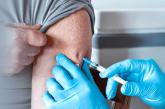Article

52-year-old man • intermittent fevers • recently received second dose of COVID-19 vaccine • tremors in all 4 extremities • Dx?
- Author:
- Aaron Lear, MD, MSc, CAQ
- Ahmed Itrat, MD
- Katherine C. Sheridan, MD, FAAFP
► Intermittent fevers
► Recently received second dose of COVID-19 vaccine
► Tremors in all 4 extremities
